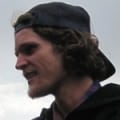We arrive at the skate shop just before closing. My uncle Dave, a physician assistant in his fifties, is still wearing his scrubs from a long day working at the hospital. The blue color of his attire is a near match to the hair dye of the retail clerk. She looks at us quizzically as we comment excitedly on the Japanese graphics painted on the bottom of a longboard. Dave’s son and my 12-year-old cousin, Matt, chimes in to our conversation:
“Dad, you should totally get it and get a board for Joe, too!!”
Dave has been going through some challenging domestic transitions. He works long, demanding hours and has little free time. Matt’s enthusiasm to get us out skating is contagious. I can see a glimmer of excitement in Dave’s eyes denoting more than the willingness to just indulge his son. The board is a tool to enable Dave and Matt to share time together by Dave actively taking part in his son’s interests. Yet, beyond the father/son bonding time, the board is also a symbol of freedom, a way of letting go of the preconceived notion of what we should do or be at a certain age. Youthfulness is a state of mind.
After purchasing the boards, we step into the well-lit parking lot and take our first turns of emancipation. The slight grade and perfect tarmac offers ideal gliding qualities. We carve in and out of sparsely parked cars, trees, and other obstacles, reveling in the simple joy of floating movement. Jokingly, we call Dave “Slomo” in reference to the neurologist, John Kitchin, who quit his medical career to rollerblade every day on San Diego’s Pacific Beach boardwalk. We skate well into the night, not getting home until well past midnight with Matt declaring, “This was the best night of my life.”
I harbor similar feelings toward scrambling as I do to skateboarding. While the physical engagement is different when scrambling, I enter a similar state of mind to when I am cruising fast, downhill on the board. Swiftly working my way up the First Flatiron, my whole body is engaged. I know every hold, hand, and foot placement, allowing me to make abstraction of the route, to move freely up the rock, untethered. The easy climbing lets me push myself anaerobically, while the exposure keeps the mind sharp. On the board, my focus is turned downhill to maintain balance and carve elegantly. Both activities demand a high level of attentiveness and mind/body engagement to attain a state of flow.
Scrambling could easily be stigmatized as a youthful activity, not fit for grown men and women, lacking the maturity and defined framework of running or climbing. For a runner, the potential risk of falling and getting hurt would seem unnecessary, while for a climber the lack of inherent technical difficulty would make the activity less interesting. However, for me, it is precisely the combination of aerobic engagement and mental commitment that makes scrambling so appealing.
Posted on the summit of the Third Flatiron a few weeks ago, I watched as Buzz Burrell, now in his sixties, came dashing up the rock, shirtless, in tiny running shorts, completely in his element. He was out for an evening time trial, on an out-and-back from Chautauqua Trailhead to the summit of the Third, with the local Satan’s Minion Scrambling Club. I couldn’t help but draw a parallel with Slomo on his blades or my uncle on his longboard. In that moment, Buzz appeared as the perfect image of a free man, completely absorbed in the movement on the rock, leaving every preconceived notion of what a man his age should be doing down in the city below, a man untethered.
Call for Comments (from Meghan)
- When was the last time you felt untethered? What were you doing when you felt that way?
- Does that feeling ignite in you a sense of freedom? Do you feel a bit nervous without your regular physical and/or emotional grounding?




Photo: Anton Krupicka


